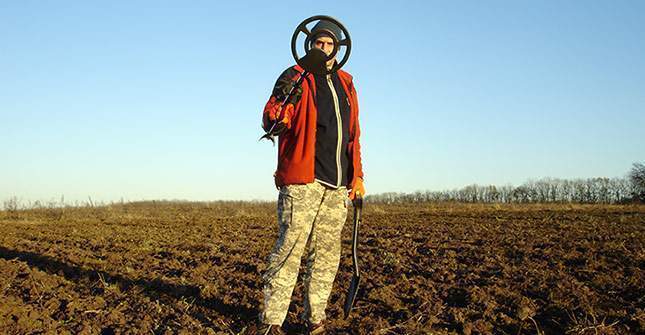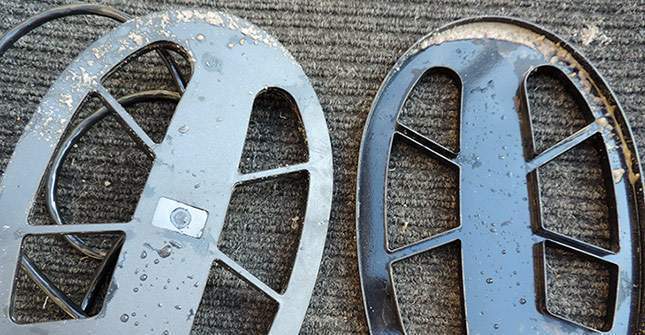Searchcoil problems. What should be checked through the list
When you come to a hunting spot and discover the problems with your metal detector, it’s a sad thing… Such problems are of two kinds – a control box and a search coil. Here’s the list of how to determine what the problem is.
1. The metal detector or not
Содержание статьи:

Whatever problem with the metal detector you’re having, start with replacing the batteries. For example, discharged batteries in the Garrett ACE or Garrett AT PRO cause the detector’s response to become erratic (although the battery icon on the screen still has one segment left).
After replacing the batteries, the next step is to restore your metal detector to the factory settings. If your coil has a cover, remove it. Exclude the effects of external interference: a cell phone, power lines, other detectors, etc.
If the problem continues, then that’s the metal detector.
2. The search coil or control box

Where is the problem: in the search coil or in the detector’s control box? This can be checked by replacing the coil. If another one operates normally, then your metal detector’s control box is intact, and the problem lies in the coil.
By the way, you don’t necessarily need the same coil as yours. You need to check the control box, so any coil suitable for this detector will do instead.
I know that many hunters have nowhere to take another coil. In such cases I usually did the following thing… I came to the metal detector store with my control box. As if I chose a new search coil for myself and wanted to check how it works before buying.
At this stage you already know where the problem is – either it’s the coil or control box.
3. Factors contributing to the problems

If your coil has a cover, you must remove it. There often is an accumulation of moisture and dirt under the cover. This is particularly true with regard to hunting at the salt water beach. I was surprised by the amount of sand getting inside the cover (saltsand under the cover is a bit of surprise).
There are often factors contributing to the metal detector problems. If you can see them, you will solve the problem faster and easier.
For example, you are hunting in a heatwave and have problems after an hour of searching – the coil warms up, wire windings lose their attachment capabilities and start wobbling inside the coil – as a result, you have false responses.
Or you are searching on the ground amongst grass covered with dew. After 30 minutes of searching you have false responses. Chances are your coil isn’t leak proof, and moisture has got inside it.
4. What problems can the searchcoil have

Metal detector coil problems may be 4 points-related: a connector, a cable, a cable entry point, and the coil itself.
There are times when the problem “lies on the surface”, so it’s easy to discover where it is. For this purpose you need to pull the connector, fold the cable, or move this one near the entry point. But there are always worse cases…
Sudden loss of depth. The coil detects targets at a very shallow depth only. For example, up to 5 centimeters for a large target. This is an indication that the coil has a broken wire inside it. Seek the point where it may be (the connector, cable, or cable entry point).
The coil doesn’t detect silver or large copper objects. The coil isn’t tuned (or is defective). Note that it may occur in certain settings – e.g., frequency shift when tuning out interference.
False responses when you shake the coil in the air. It may be both the cable and loss of wire attachment points inside the coil. In this case, I would try to knock on the coil, herewith trying to keep the cable fixed. If it’s the cable, the repair is simpler. If wire windings aren’t attached inside the coil (e.g., have become dislodged because of a side impact, or softened when heated), then you cannot do without opening the coil.
